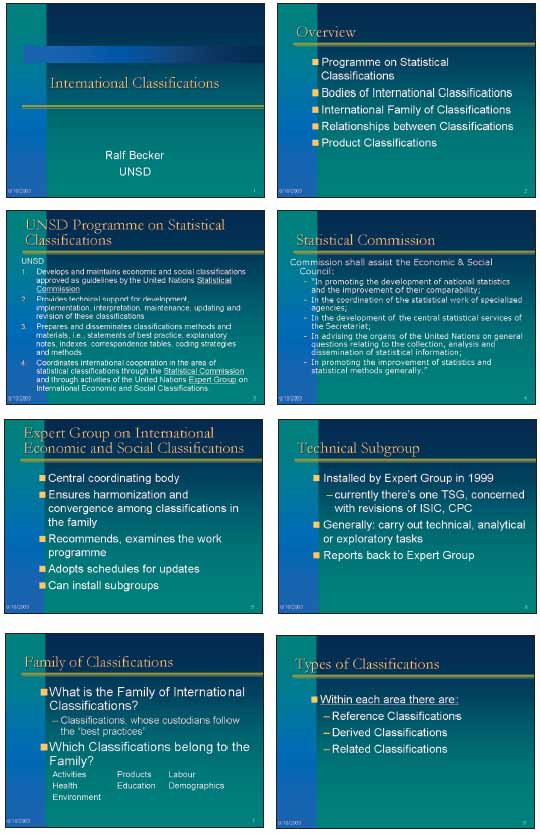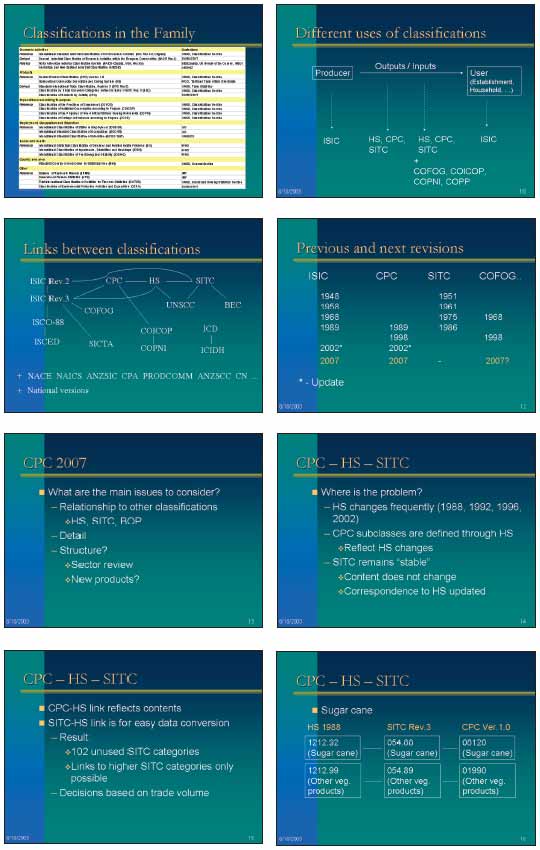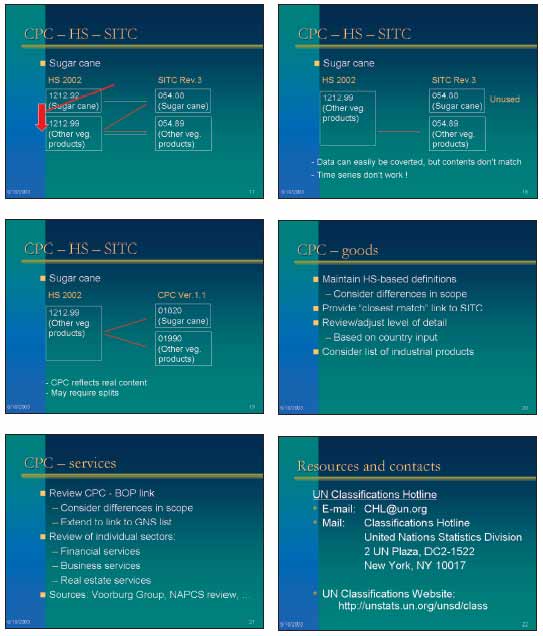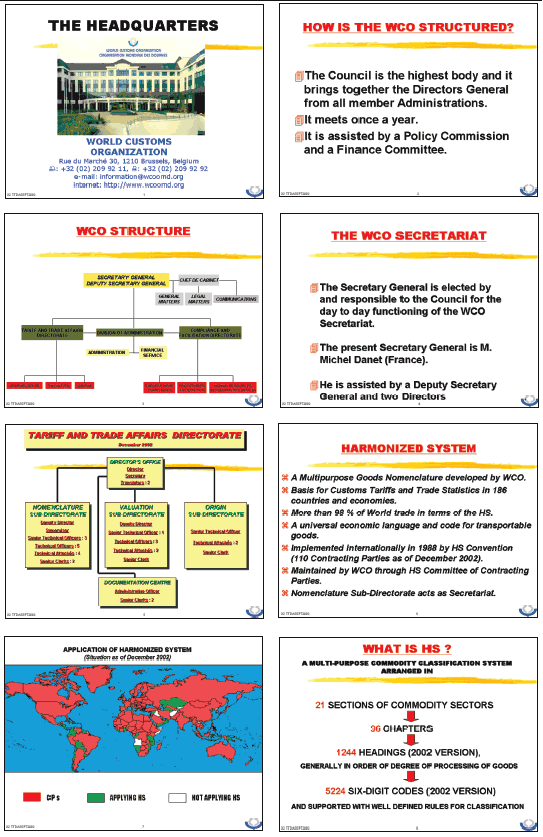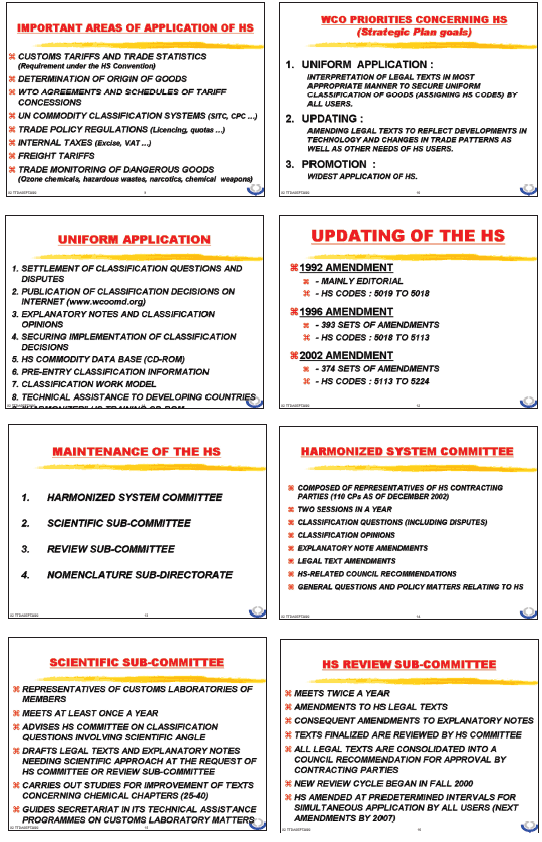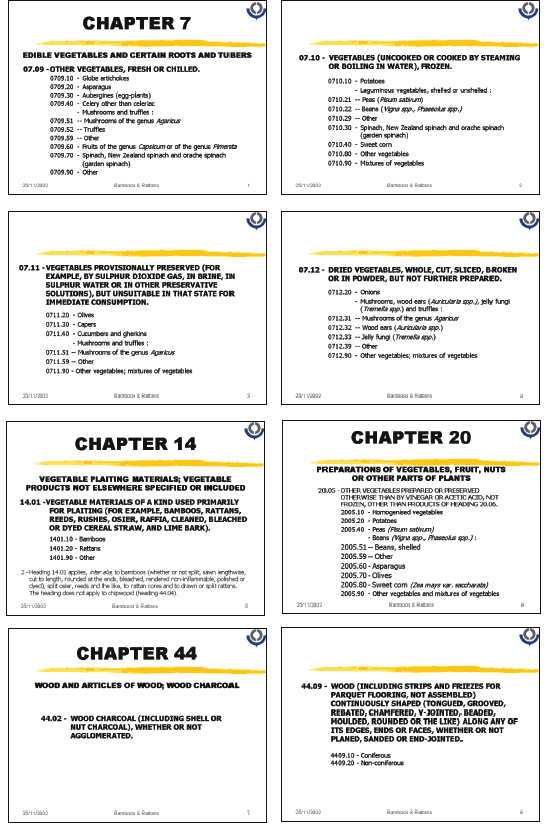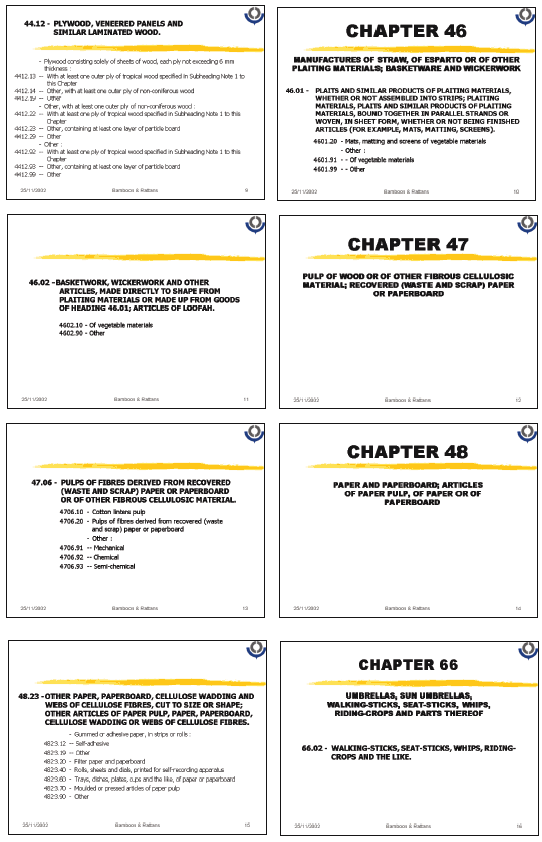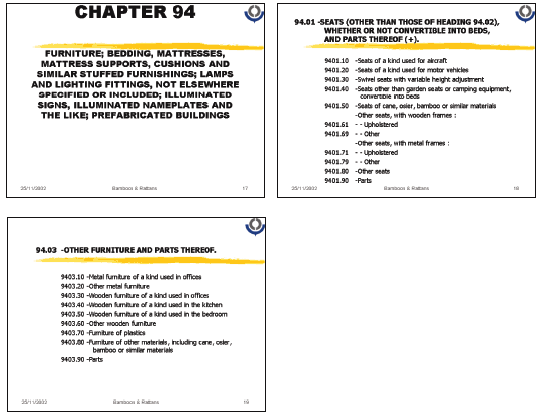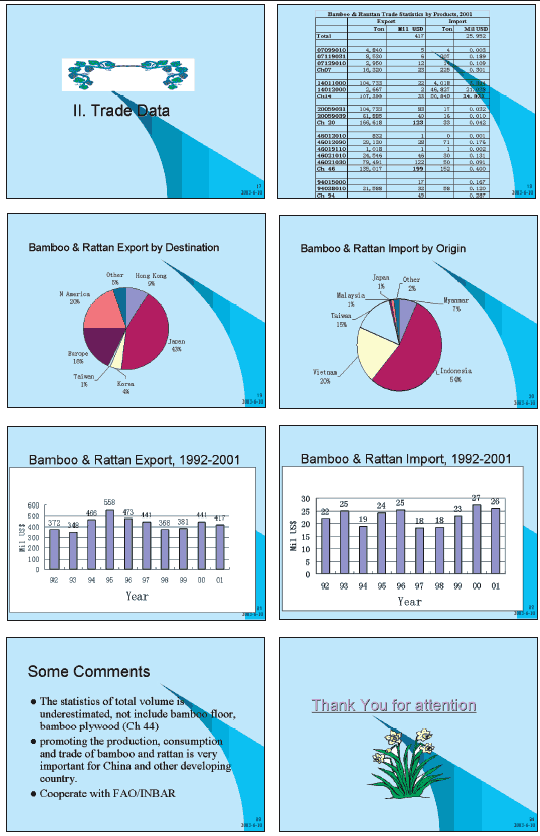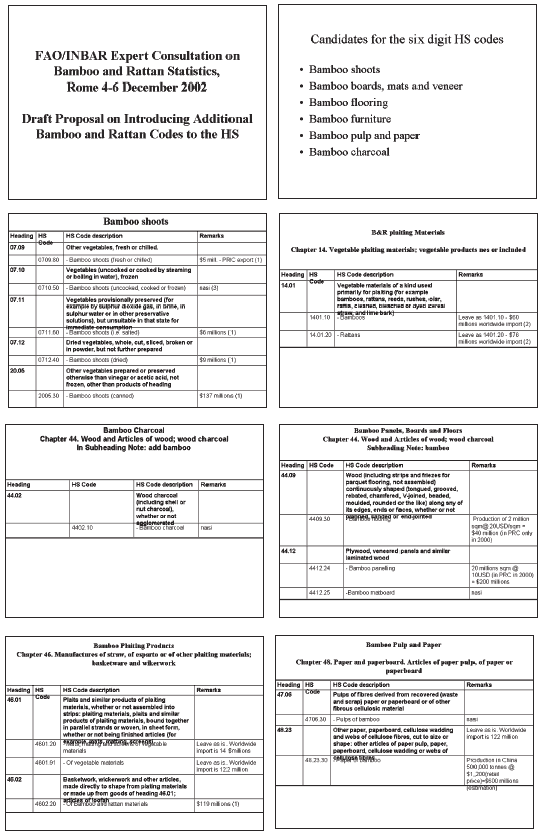



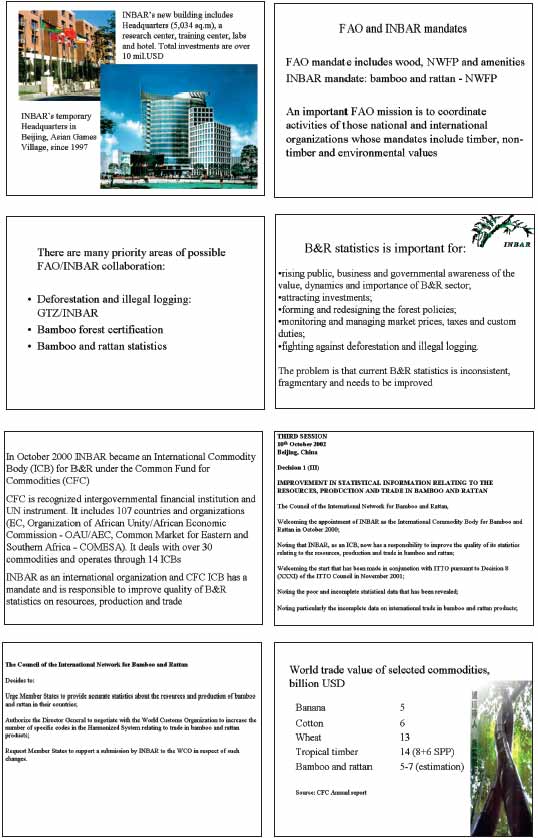

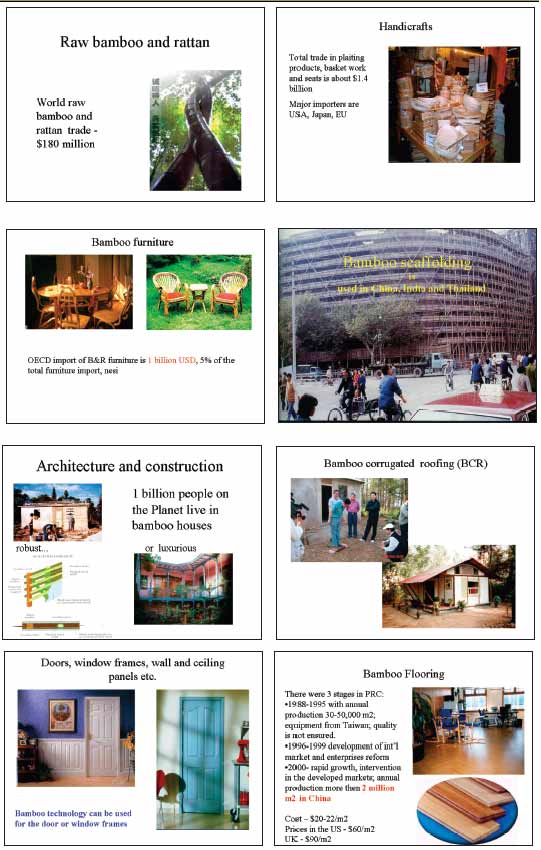
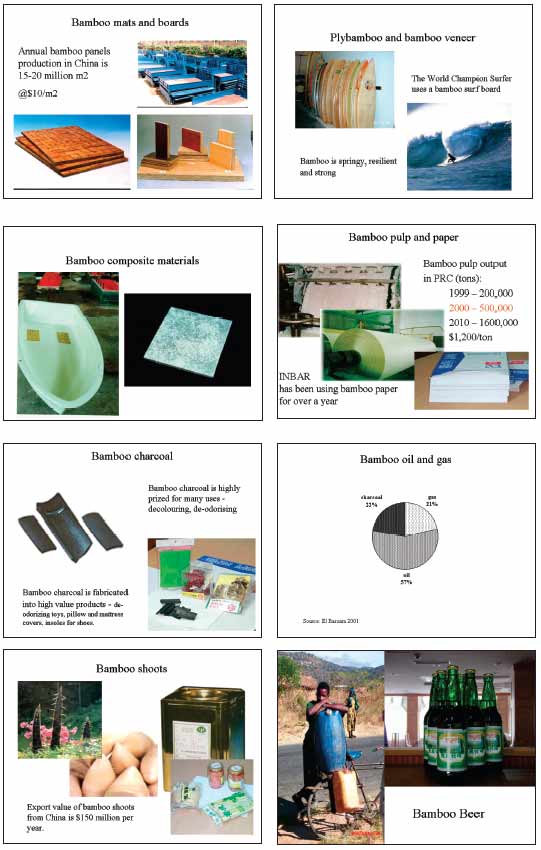

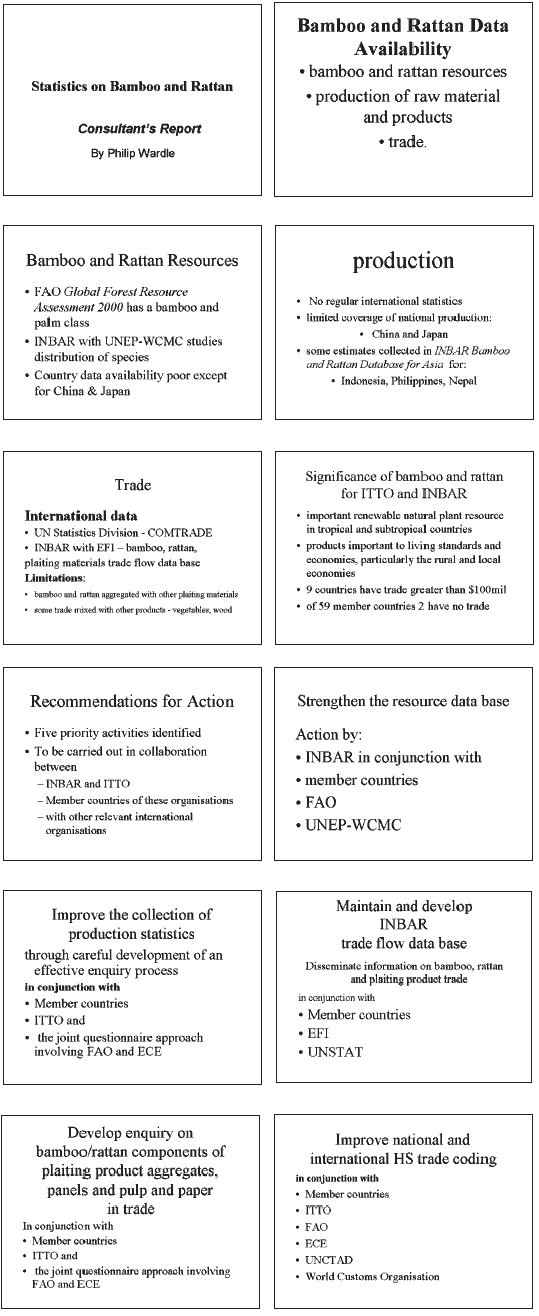
ITTO DOCUMENT ITTC (XXXIII)/11 8 AUGUST 2002
Report on the establishment of database of statistics on
trade in bamboo and rattan
Prepared by Philip Wardle (49 pages)
This consultancy was carried out as a part of the collaboration between INBAR and ITTO. The aim was to make proposals on approaches to obtain regular information on relevant bamboo and rattan products (resources, production and trade).
The first section reviews the availability of international and national data on: (i) bamboo and rattan resources; (ii) production of raw material and production of products; (iii) trade.
The review found that very little international data had been assembled on resources or production. National studies of China and Japan showed that quite detailed information on bamboo resources and production were available for both countries, while for China there was also information on bamboo manufactures in national statistics and through expert estimates.
International data on trade is available from the UN Statistics Division in COMTRADE. However, data on bamboo and rattan products are aggregated in the international coding system, with products of other plaiting materials and with wood products. Bamboo shoots are aggregated with other vegetables. Some bamboo and rattan products are separated in the national coding systems of China and Japan.
Bamboo and rattan are important renewable resources in member countries of INBAR. The largest exporters of their products are both INBAR members and producer countries in ITTO. The large importers of the products are consumer countries in ITTO.
This review of the statistics on bamboo and rattan has identified the following priorities for future development of international data on resources, production and trade:
* Strengthen the resource database in conjunction with member countries and FAO.
* Improve the collection of production statistics through careful development with counties, through an effective enquiry process.
* Maintain and update the established INBAR plaiting materials trade flow database and disseminate information based on analysis of those data.
* Develop effective enquiry on the bamboo/rattan component of plaiting product aggregates, panels and pulp and paper in trade.
* Seek modification of national trade coding and international HS trade coding to secure greater visibility of important bamboo and rattan products in international trade statistics.
These activities should be pursued through collaborative effort of INBAR and ITTO and their member countries, in cooperation with FAO, European Forest Institute and the World Customs Organization.
